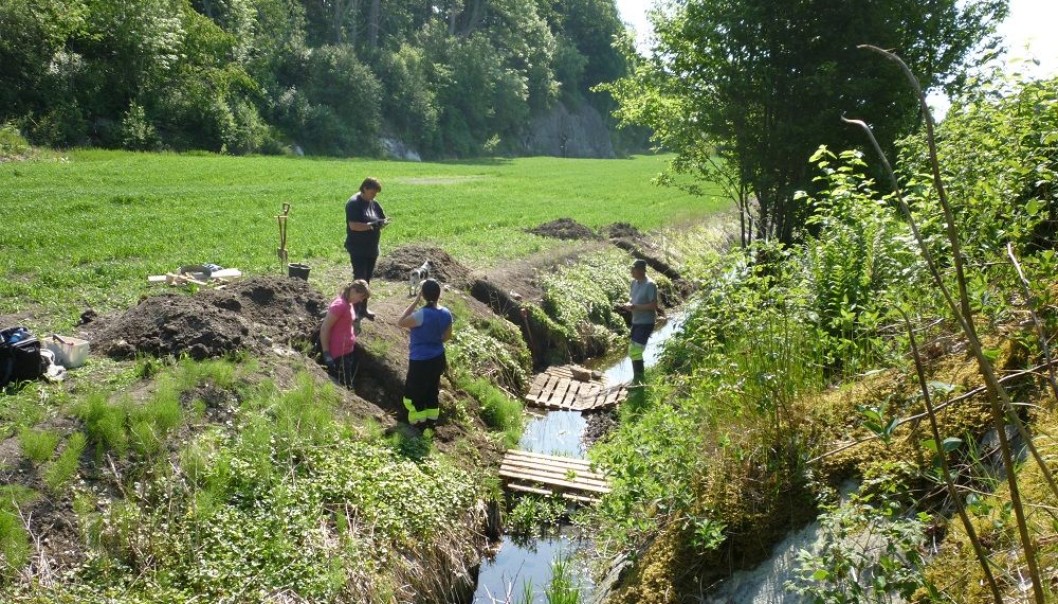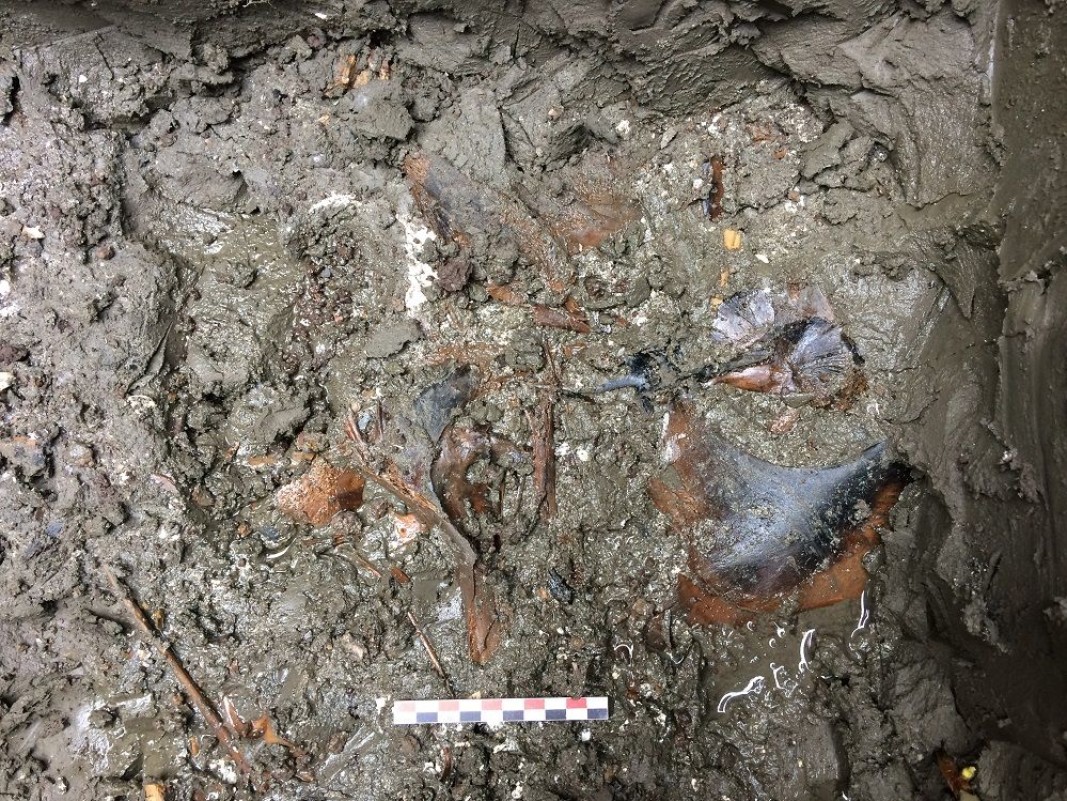William sent in this link – https://sciencenorway.no/archaeology-history-stone-age/archaeologists-ha… … archaeologists in Norway claim to have found well preserved gear from fishermen that lived 5000 years ago – along with a lot of blue fin tuna remains. A farmer first came across it in the 1930s whilst digging out a deep drainage ditch in a field. Even the bones of a killer whale emerged – and lots of fish hook and harpoons made of bone. They have been in a museum in Oslo for most of the time since their discovery. That is, until an archaeologist decided to have another look and became somewhat intrigued. He set in motion a new excavation, beginning in 2018 and embracing 2019. He hopes to renew excavation in the near future …
 … the site is dated somewhere between 3700 and 2500BC. We are told sea levels at this time were higher and what became a wetland zone may have been a lagoon. This accounts for all the fish remains. Digging quite deep into the top of the soil, which contained a lot of clay, they eventually reached a layer of moist and sticky clay, indicating a watery origin. This is probably why the fields were water logged, as clay is difficult for water to penetrate and water tends to pond as a result. It can also make water move horizontally, springs and streams. It depends on the lie of the land. In this instance it is a valley with high ground on both sides. Geologists have interpreted it as a former sea bed. In the clay layer were numerous bones (see below) …
… the site is dated somewhere between 3700 and 2500BC. We are told sea levels at this time were higher and what became a wetland zone may have been a lagoon. This accounts for all the fish remains. Digging quite deep into the top of the soil, which contained a lot of clay, they eventually reached a layer of moist and sticky clay, indicating a watery origin. This is probably why the fields were water logged, as clay is difficult for water to penetrate and water tends to pond as a result. It can also make water move horizontally, springs and streams. It depends on the lie of the land. In this instance it is a valley with high ground on both sides. Geologists have interpreted it as a former sea bed. In the clay layer were numerous bones (see below) …
 … you can see a lot of bone in just this small window of the clay. In with the remains of fish were discovered lots of fish hooks and other fishing equipment. This suggested the site was actually a sea bed complete with the lost hooks and harpoons etc,. of the fishermen, that had fallen to the bottom of the lagoon. Seems like a reasonable interpretation until we begin to wonder how a small whale, a killer whale, lots of cod, and what looks like a school of blue fin tuna, ended up in a lagoon. Were they all funnelled into the lagoon in a purposeful strategy by a group of fisher folk, much like ducks are encouraged by a funnel in a lake or pond, as in a duck decoy. We also know that hunters funnelled large mammals into enclosures as well, and farmers still apply such a technique to get cattle and sheep into trucks and for dips etc. One can see that as a prehistoric strategy quite easily. However, it is the date that is interesting – 5000 years ago. At 3200BC there is evidence of sea level changes in NW Europe and a very cold snap in the climate, which is how Oetzi the ice man came to be frozen in a glacier. Glaciers in thee Andes display a similar point of origin – or expansion. It is therefore possible a tsunami wave was responsible for all those fish in the lagoon – overwhelming fisher folk in the process. The latter option was not part of the research it would seem so we don't really know if it has traction. Still, the idea that it involved human ingenuity in catching some very big specimens of marine life is a nice result from an archaeologist's point of view.
… you can see a lot of bone in just this small window of the clay. In with the remains of fish were discovered lots of fish hooks and other fishing equipment. This suggested the site was actually a sea bed complete with the lost hooks and harpoons etc,. of the fishermen, that had fallen to the bottom of the lagoon. Seems like a reasonable interpretation until we begin to wonder how a small whale, a killer whale, lots of cod, and what looks like a school of blue fin tuna, ended up in a lagoon. Were they all funnelled into the lagoon in a purposeful strategy by a group of fisher folk, much like ducks are encouraged by a funnel in a lake or pond, as in a duck decoy. We also know that hunters funnelled large mammals into enclosures as well, and farmers still apply such a technique to get cattle and sheep into trucks and for dips etc. One can see that as a prehistoric strategy quite easily. However, it is the date that is interesting – 5000 years ago. At 3200BC there is evidence of sea level changes in NW Europe and a very cold snap in the climate, which is how Oetzi the ice man came to be frozen in a glacier. Glaciers in thee Andes display a similar point of origin – or expansion. It is therefore possible a tsunami wave was responsible for all those fish in the lagoon – overwhelming fisher folk in the process. The latter option was not part of the research it would seem so we don't really know if it has traction. Still, the idea that it involved human ingenuity in catching some very big specimens of marine life is a nice result from an archaeologist's point of view.
